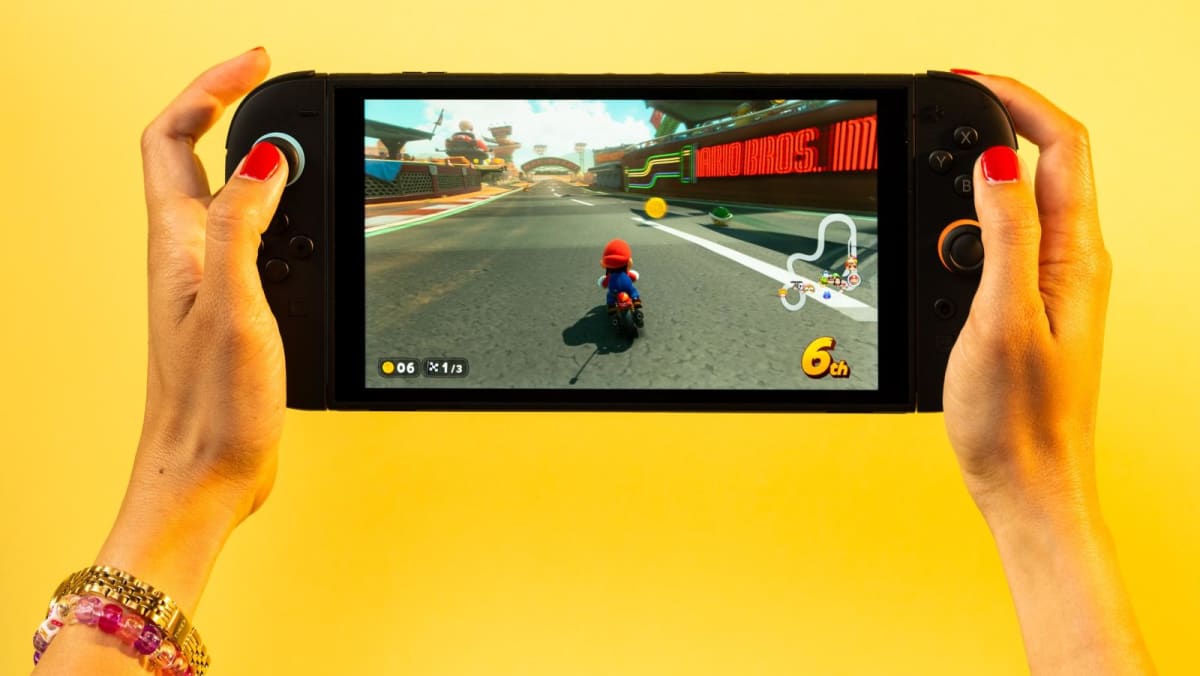Everything else should be familiar. Connecting a Switch 2 to a TV remains a breeze: You use two cables to connect the dock to your television and a power outlet. From there, you set the Switch 2 on the dock so the image shows up on your TV.
A BIGGER SCREEN AND FASTER SPEEDS
The Switch 2’s 7.9-inch screen is significantly larger than the original Switch’s 6.2-inch screen, which adds to the system’s bulk. I had no issues carrying the Switch 2 in a backpack, and it didn’t feel too heavy playing at a cafe. The quality of the Switch 2’s screen, in terms of brightness and colour accuracy, is noticeably better than the original’s.
What makes the Nintendo Switch 2 a no-brainer upgrade is its jump in speed and graphics performance. Everything, from navigating the system’s menus to playing games, feels smoother and snappier. A bonus benefit is that the Nintendo Switch 2 can still play most games made for the older Switch, and those also run better on the new hardware.
In my tests, some older Switch games, including the Legend Of Zelda: Tears Of The Kingdom and Super Smash Bros Ultimate, loaded much faster.
Nvidia, which produced the graphics processor for the Switch 2, said its chip would deliver 10 times the graphical performance of the first Switch. I tried Cyberpunk 2077, a high-production game with intense graphics, and I was impressed with how well it ran. In the older Switch game, Super Mario Odyssey, Mario’s movements looked less stuttery.
BATTERY LIFE STILL ISN’T GREAT
As with many portable devices, battery life leaves much to be desired. The Switch 2 had enough juice to get me through roughly two hours’ worth of Mario Kart races while waiting at a laundromat, about the same battery performance as the original.
The battery life isn’t terrible, but it’s a disappointment that it hasn’t improved. Fortunately, the Switch 2 still uses a USB-C port, which has become a universal standard for power cables, so you will probably be able to use the same wire that you carry to charge your phone.
